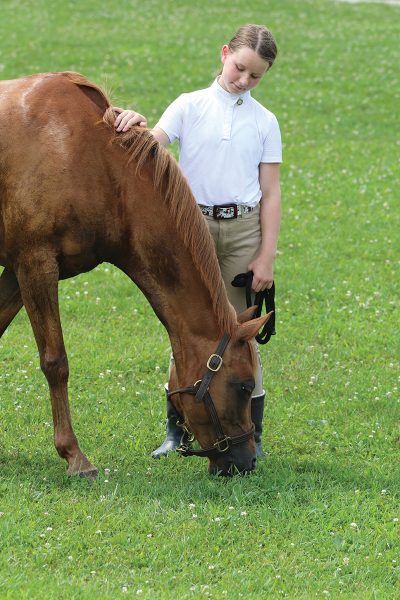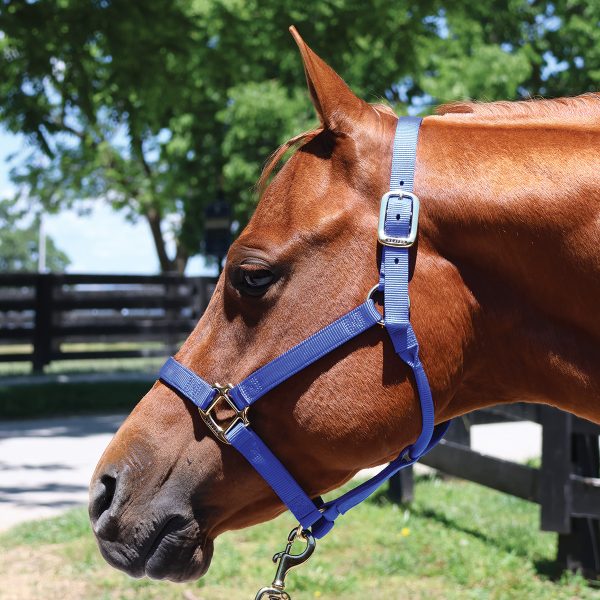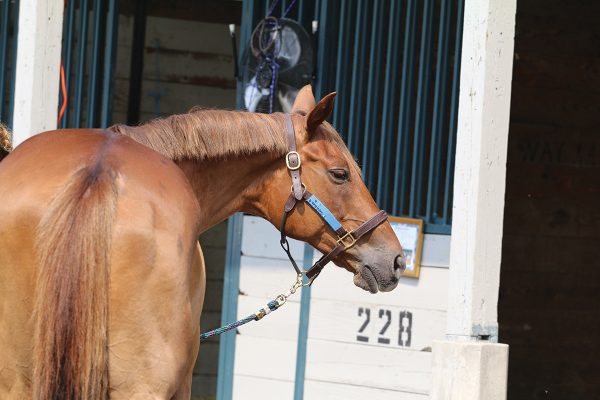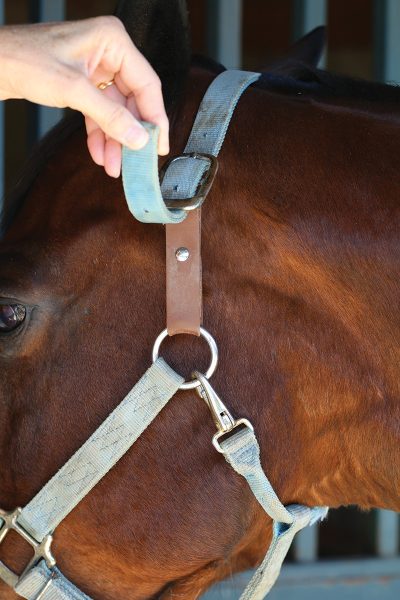There is one piece of equipment that is crucial for horse ownership. A halter is used to handle, lead, and tie a horse. They should be clean and fitted properly. Read along for tips from The United States Pony Clubs, Inc. (USPC) on finding the right halter fit for your horse.

Halters come in many different styles and materials, but the most common materials are leather or a synthetic material, like nylon. It’s advisable that any halter you use should always have a breakaway component, except in certain special situations.
Halter Selection

Depending on what you are doing with your horse, you’ll want to select the correct halter for the situation.
Here are some examples:
◆ Use a leather show halter along with a nice chain-end lead shank for showing in a halter class.
◆ For daily haltering to groom, a grooming halter can be used. Because there is no throatlatch, it’s easier to reach the cheeks, chin and muzzle.
◆ If a halter is left on in a pasture or stall, then a full leather or a breakaway halter is recommended. This way, if the horse gets his halter caught on something, he can easily break the halter and get free.
◆ A continuous rope halter is used for many ground training techniques very successfully, but it is not recommended to tie a horse in one of these. They will not break, and your horse could get seriously hurt.
How Do You Know if a Halter Fits a Horse Correctly?

◆ The noseband should lie halfway between the projecting cheekbone and corner of the mouth.
◆ A halter should fit snugly but comfortably, without rubbing, pinching, or hanging too loose for safety and control.
◆ You should be able to fit no more than the width of three average-sized adult fingers between the nose bone and the noseband.
◆ You should be able to fit no more than an average-sized adult fist between the throat latch and the horse’s cheek.

Quiz Yourself
Test your knowledge about haltering and leading your mount by answering True or False below:
1. Before you put the halter on the horse, make sure that the lead rope is draped over your shoulder.
2. Always approach your pony from straight on at his head.
3. Never lead by grabbing the halter without a lead rope.
Quiz Answers
1. False: Before you put the halter on the horse, place a lead rope around the horse’s neck a few inches below the poll (the area between the ears) so that if he begins to move away from you, you can quickly grab the lead rope and hold him to put the halter on. This is especially important when catching your horse in a pasture or field.
2. False: Even though approaching head on may seem logical, it is best to approach a horse at his shoulder due to the horse’s blind spot, which is directly in front of him.
3. True: If you are holding just the halter and the horse pulls away quickly, you could be hurt as you are not able to control him safely by just grabbing the halter with your hand.
Brought to you in partnership with The United States Pony Clubs, Inc. Pony Club offers education and hands-on opportunities for equestrians of all ages in a community atmosphere. Join Pony Club for more lessons like this! Find a Pony Club or Pony Club Riding Center near you and learn more at www.ponyclub.org.
This article about halter fit for horses appeared in the September/October 2023 issue of Young Rider magazine. Click here to subscribe!


